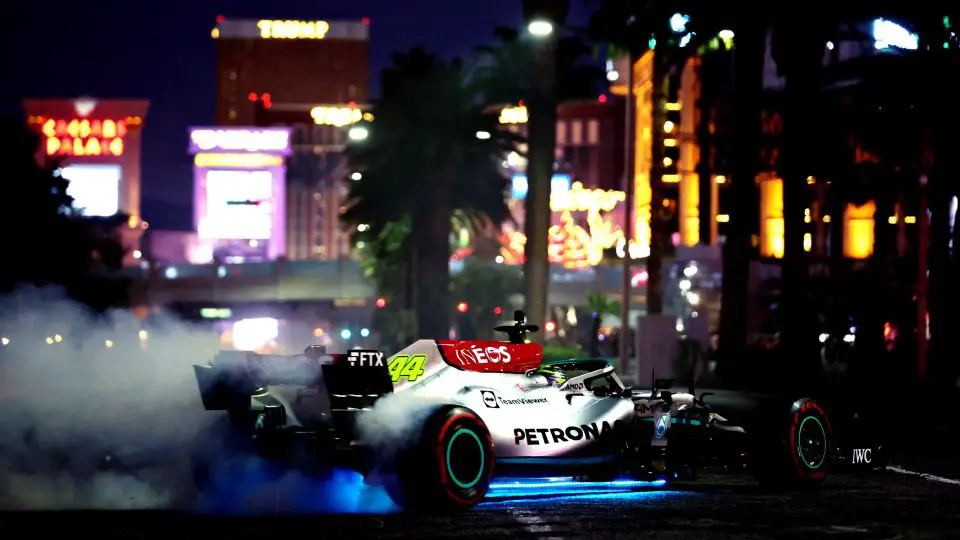Las Vegas Grand Prix Unveils Night Race: Pirelli Tackles Technical Challenges with Softest Tires
In a groundbreaking move, the Las Vegas Grand Prix introduced a night race format on a new circuit, selecting Pirelli’s softest tires to address the unique challenges. This unprecedented decision by Pirelli highlights the technical complexities of the first-ever Las Vegas Strip circuit race.
Key Takeaways:
- Tire Selection and Schedule: Pirelli’s choice of the softest tires (C3, C4, and C5) for the Las Vegas Grand Prix aligns with the unique night race format, extending over multiple days. This tire selection is a strategic response to the new track conditions.
- Circuit Design and Features: The debut of the 6.12-kilometer Las Vegas Strip circuit, boasting 17 corners and three straights with an estimated top speed of 342kph, presents a new racing landscape. The 50-lap race includes distinctive landmarks, adding to the visual spectacle.
- Historical Context and Celebrations: Marking F1’s return to Las Vegas since the 1980s, the race is celebrated with a grand opening ceremony featuring top artists and a pit building shaped like the F1 logo, adding to the event’s grandeur.

The Las Vegas Grand Prix is poised to redefine Formula 1 racing with its unique night race format and the debut of the Las Vegas Strip circuit. This historic event marks F1’s first race session spread over multiple days, starting from Thursday evening and culminating on Saturday night. The schedule, coupled with the night race, brings a new dimension to the racing weekend.
The circuit itself is a marvel, stretching over 6.12 kilometers with 17 corners and three straights. It is anticipated to be one of the fastest tracks in the season, reaching top speeds of 342kph. The urban setting along the Las Vegas Strip, featuring landmarks like The Sphere, elevates the visual experience.
An elaborate opening ceremony will celebrate F1’s return to Las Vegas, with performances by Steve Aoki, Thirty Seconds to Mars, will.i.am, and Cirque du Soleil. The infrastructure, including the F1-logo-shaped pit building, underscores the event’s scale and preparation.
Mario Isola, head of F1 and car racing at Pirelli, emphasized the challenges of the new circuit, highlighting the lack of prior racing experience on the Las Vegas Strip and the decision to use the softest tire compounds to adapt to the mixed surface and cooler night temperatures.
“It will be a major technical challenge for both the teams and us, as we head into this race with no real references apart from simulation,” Isola stated. “Nobody has ever actually driven the 6.12-kilometre Las Vegas Strip circuit before, which is second only to Spa in terms of overall length this year, characterised by three straights and 17 corners.
“The surface will be a mix of the usual street asphalt, especially on the actual Strip, as well as other parts that have been completely re-asphalted for the occasion; adding another unknown element.
“There won’t be any support races and the track will be opened again to normal traffic for long chunks of the day, which means that the surface won’t rubber in as usual and deliver improved grip.
He continued, discussing the long straight-away across the Vegas strip and the challenges of maintaining tire temperatures.
“We’re expecting the cars to run quite low levels of downforce, similar to Baku or indeed Monza: hitting a high top speed will be key to being competitive.
“All the sessions will take place at night, with unusual ambient and track temperatures for a race weekend; more similar to those found back when pre-season testing used to take place in Europe.
“Those long straights also make it harder to warm up tyres in qualifying, as well as keep them in the right window: the same challenge as seen in Baku, which will probably be more pronounced in Las Vegas.”
Pirelli’s decision to provide the three softest compounds aims to maximize grip in the cooler conditions, addressing the unique dynamics of this highly anticipated race.
“In cold conditions, the gap between cold tyre pressures and normal running pressures is greatly reduced – so when the car is moving, tyre pressure will increase a lot less than on other circuits due to the low asphalt temperatures.
“As a result, we think that running pressures will still be lower than on other circuits that are tough on tyres, such as Baku for example.
“So all the elements are in place for an extraordinary race, packed with surprises and unpredictability. As the title of Elvis Presley’s famous racing film goes… Viva Las Vegas!”


